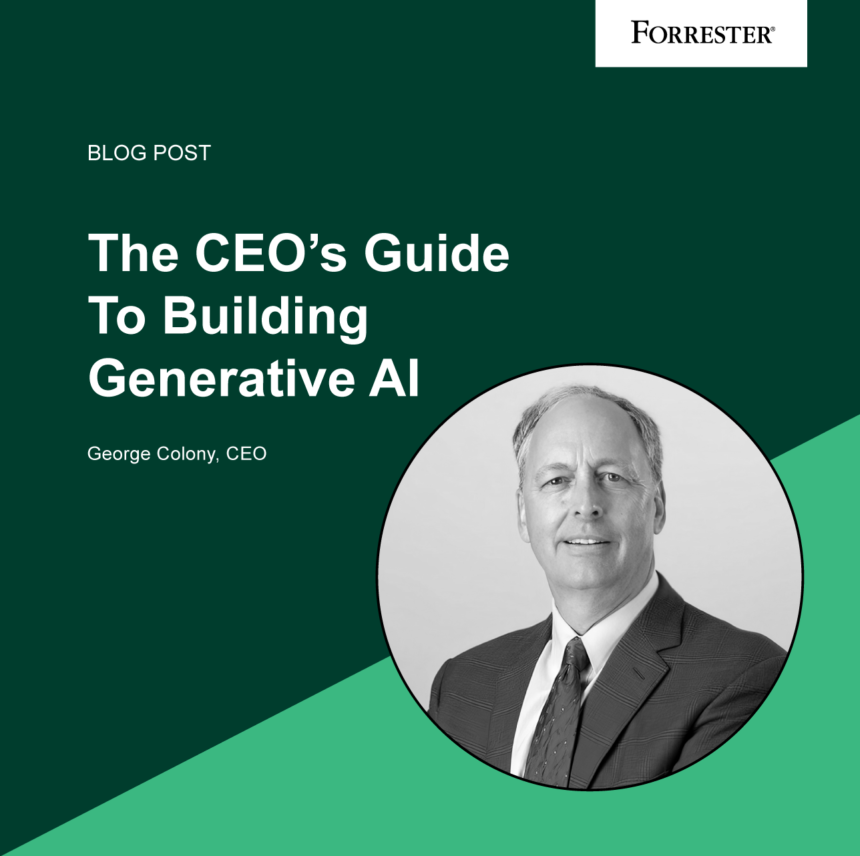One of my previous posts counseled CEOs that they can’t wait on generative artificial intelligence (genAI). This post gives CEOs guidance on what to expect when their teams build genAI applications.
But before I get into those lessons, some big picture context.
Generative artificial intelligence is a technology that lets people converse with big piles of data and create something new and original from that data. It has the promise to unlock massive value from the data currently frozen in databases, structured data systems like CRM, and perhaps most importantly, data held in unstructured forms including documents and spreadsheets.
Prior to Gutenberg’s invention of the movable-type printing press around 1440, the church controlled information, including the classical writings of Plato, Socrates, Thucydides, et al. What happened following Gutenberg? Information was released into the hands of society, powering the Renaissance, the Reformation, the Enlightenment, and the first nation state based on Enlightenment thinking: the US republic.
GenAI is the Gutenberg press of the 21st century. It will unlock information and create the means for new and original data to be created.
In my modest way, I have created “Colony’s Law”: With generative AI, the value of information will double every year. This value will manifest in two ways: 1) Access will be greatly expanded and 2) new and original information will be created — in two words: access and creation.
Practical Lessons Learned So Far
Forrester clients have said to me, “Hey George, I love the history/philosophy lesson, but how do you actually build something using generative AI?”
Forrester is a big pile of data (we have a lot of research). A year ago, we began building a genAI model that would enable our clients to converse with our research. We call it Izola, and it became available to all Forrester Decisions clients in May. (If you are a client, you can access Izola here.)
As CEO, I learned five lessons from that experience:
- This will be the easiest thing you ever do and the hardest thing you ever do. Getting your model up and running won’t take long — six to eight weeks, depending on how clever your programmers are and how much infrastructure (e.g., AWS) you have in place. But that model won’t be dependable; its output accuracy will be in the 60% range — not good enough for your customers or users. Getting to 80% accuracy or better is hard. And it will take six to eight months and much testing and work to get there. We went through four underlying models in the process, starting with Bard, then moving to Llama, then to Orca, and ending up on Mistral. So don’t get intoxicated by your early success — you will have a lot of work ahead.
- You can’t predict where the best thinking will come from. I have clients ask me, “We want to build a genAI platform — where can we find the experts to do that?” The reality is that there is no extant pool of genAI experts — it’s a new field of computer science that is changing quickly, and everyone involved is learning on the fly. In our case, we were put in play by a summer intern — a computer science undergraduate from BYU who figured out how to get the first model up and running. We then combined his work with the prototypes built by the development teams at Forrester. Their collaboration pushed our model faster, and we began to solve problems quickly. The lesson in all of this is that your genAI breakthroughs will not come from the expected places. You have to open lots of doors and let many walk through those doors. Let a thousand flowers bloom.
- It’s not that expensive. The tools are relatively cheap, the models are available, and you don’t have to break budgets to make progress. You should be able to implement a usable system for under $1 million. Your goal should be to have 10 genAI projects ongoing, with the goal of deploying one of these systems to production by the end of the year. It’s less about the money and more about how creative your team can be in identifying the highest-return application. Imagination and risk-taking are the dear commodities, not money.
- The CEO (you) must provide air cover. The head of the effort here at Forrester said, “Having the CEO [me] in the game was my ultimate cheat code. When I needed more money, or I needed to take risks on a new technology, or the organization doubted me, the CEO had my back.” To progress with genAI, you as CEO will have to have a basic working knowledge of it. You must become an “educated amateur” and build what Forrester calls your artificial intelligence quotient (AIQ). Get the OpenAI ChatGPT app on your phone — better yet, get it on your kids’ phones and let them teach you what this is all about.
- Do it. It’s fun to listen to Taylor Swift or watch her movie. But it’s way more fun to go to one of her concerts. Don’t be intimidated by the buzzwords and sci-fi BS surrounding genAI, and certainly don’t let it prevent you from developing. Remember, this is just coding with a few extra steps — it’s the next arena of excellent software engineering. So don’t overcomplicate and don’t overthink this — move forward.
GenAI Closes Gaps With Your Customers
As with all development projects, there are no shortcuts, and the road is filled with barriers. So why should companies build a genAI application? What is the point? The simple answer is: customers.
Between your company and your customers are a number of walls: bad websites, GDPR-hobbled email, ineffective advertising, Google search, search engine optimization, catalogs, competitors. Your customer is trying to see you through all of those walls — and the final picture is fuzzy and dark and distorted.
Done right, genAI has the potential to tear those walls down and enable customers to converse directly with your company, without moving through middlemen or unnecessary steps. Your model should enable you to better understand your customers — who they are, how their behavior is changing, and what they really want. In the age of the customer, there is no more critical imperative.







